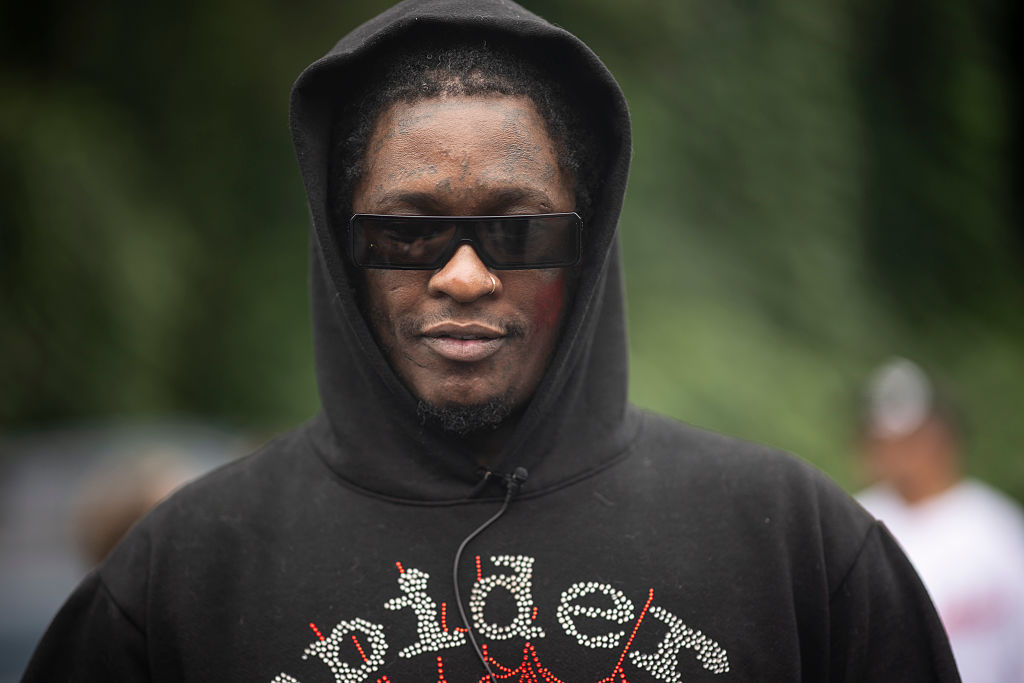Slow Crush are no strangers to waiting.
In the three years between their debut record Aurora and sophomore effort Hush, Slow Crush built a steady fanbase. Emerging onto the live scene in full force after the pandemic, the Belgian shoegazers toured relentlessly, selling out shows and developing a live connection that fast-garnered attention.
The members of Slow Crush had played together in previous bands with a heavier edge, which certainly translates to Slow Crush’s evolving sound. “It's calling on all the music that we've ever played in the past. So, all of us have played in many bands over the years in various forms and shapes and collaborations,” Isa Holliday explains.
“Mainly, they were heavier bands. Our drummer is a bit of a jack of all trades, and he plays lots of different genres. So all of those different genres can be found, I think, in what we play now. And that heavier aspect, I think, is also very present in our sound, especially in the earlier albums. In Aurora, the drums are very hard-hitting and somewhat in your face, then we progress and get a little bit more technical, I think, so that is due to our previous musical backgrounds.”
Get the Best Fit take on the week in music direct to your inbox every Friday
While there is a noticeable heaviness to the group’s sound, especially on their first two LPs, there is something more melodious at play on new album Thirst. In part, this might be due to their collaboration with new producer Lewis Johns, but also the group’s time away allowing room to develop and evolve as artists.
On finding the balance between the lighter and darker moments within their soundscapes, Holliday says, “I think it just comes very naturally. Again, just because we all listen to a lot of different music styles and it is just an evolution of our sound in general. We have always been a band that deals with yin and yang, so the darker and lighter aspects of life that we try to bring forth in our music. So, I think that is just part and parcel of who we are.”
One of the tracks that best exemplifies this evolution is “Hollow”, a highlight off Thirst that retains their familiar sound with a softer emphasis. “‘Hollow’ is a bit of a darker song, also very melodic and a bit quieter, but it does have that sort of impending threat I suppose that runs through it. Then, on the other side, it is very dreamy as well. It has got a floaty, lighter feel to some parts. So it is that sort of balance that we try to bring.”

Thirst was recorded at The Ranch in Southampton where Slow Crush worked with Lewis Johns on production duties. They had known him for some time and were keen to make a collaboration work. As a fan of the acts he’s previously produced with, from Rolo Tomassi and Svalbard to Pupil Slicer, Holliday notes, “the bands that he works with are generally a bit harder or heavier than what we play, so we thought that that would be a nice sort of merge to deal with for this record.”
Continuing, Holliday also touches on how the group have sought to make a broader sound with a more powerful atmosphere, and that is in large part due to their newfound collaboration with Johns. “It's the first time that we have been able to work with [Lewis]. We've known him for a long time, and we've both been wanting to work with each other for a while. But now the stars aligned and we're able to work together, and he brought a different and a whole new level to what we thought that we would be able to achieve.”
Lewis Johns’ influence is apparent in the slight flourishes across the record – especially some saxophone at the end of the second track, “Covet”, an element certainly not something you’d expect to hear on a Slow Crush record. For the band, it is clear that they’re not content to stand still and stick to the familiar, constantly looking at new ways to expand their sonic palette: “I think everybody has an evolution. It would be a shame if that's not also represented in your music. It's also a little bit boring to play the same old songs or the same style constantly.”

The sky is the limit for Slow Crush, returning with a renewed sense of vigour and optimism and their punchier sound in tow. In terms of where they’d like to go next, Holliday offers, “everywhere and anywhere we can. I think it'll be interesting to see how much of a change there will be now that we're with Pure Noise [Records]. They've got a very, very big following”.
With their upcoming tour, the group are hoping to break new ground as they prepare to play some of their largest shows to date in the UK. They’re hoping to go to Japan and South East Asia, something that was on the cards for their previous tours but was disrupted by COVID.
Each band has their own process, but what comes first for Slow Crush – the sound or lyrics? “It's generally the sound. Usually the guitars come first, and then we just jot a very rudimentary demo, get the drums in and then just build up the layers and instruments as it goes. So vocals are usually the last to come in line.”
Thirst is by far some of the most eclectic music that Slow Crush has released, with Holliday highlighting the importance of the band’s musical diversity. “I think we've done that in the other records as well, but I feel this is a broader range that we've presented. I like to think of the album as a kind of Mellon Collie and the Infinite Sadness sort of replica in the way that there's the more upbeat side A, and then side B is a little bit more dreamy and darker.”
“I've also heard it described beautifully as the serenity before an impending nightmare,” she continues. “I like that, that's very good. I think that is a kind of storyline that runs through the album, that it starts quite serene and then drifts into a darker depth.”
Even though there is an obvious shift on Thirst, Holliday is keen to stress that there remains a throughline or, as she puts it, “a red line.” In short, it’s a Slow Crush flourish; a signature sound that connects all the band’s albums and marks an exciting new chapter she hopes will find a welcoming home with their fans, old and new.

 2 weeks ago
12
2 weeks ago
12




.jpg?mbid=social_retweet)













 English (US) ·
English (US) ·